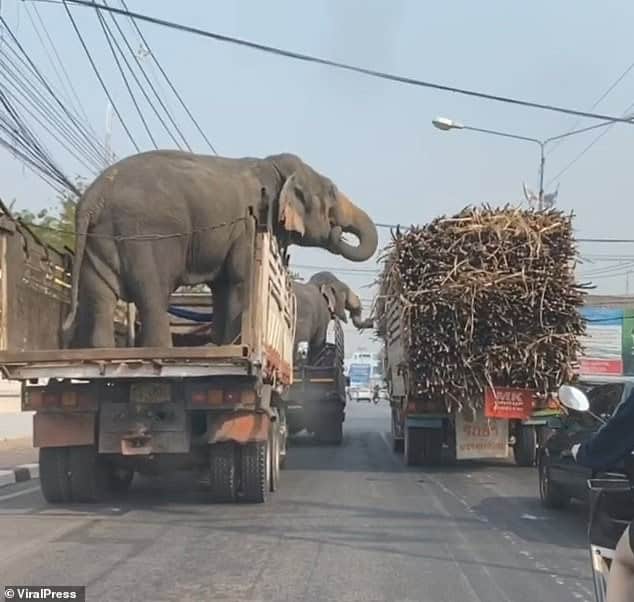One day in northern Thailand, traffic at a junction paused for a moment—and that’s when a couple of elephants made a bold move. In Nakhon Sawan, a truck carrying freshly harvested sugarcane stopped at a red light. Two opportunistic elephants saw their chance, stretched their trunks, and started helping themselves to the load.
It wasn’t a typical heist; it felt more like nature’s audacity on full display. Locals and passersby froze, cameras drawn, as the pachyderms pulled sugarcane stalks from the neighboring vehicle. Some onlookers laughed, others gasped. But all watched in awe at how these massive creatures navigated human space so confidently.
These weren’t tame parade elephants but wild ones, part of Thailand’s rich biodiversity. Estimates say the country houses 3,000 to 4,000 elephants—some dwelling in sanctuaries or parks, others roaming closer to human settlements. The boundaries between forest and farmland blur, and that makes such encounters more likely.
The sugarcane truck was ripe with temptation. As the elephants reached over and tugged at the stalks, the truck driver probably thought it was a prank or a glitch in the road. But these animals knew exactly what they were doing. When the light changed, they gently (or not so gently) carried a few stalks along before moving on.
This episode reveals more than comic relief. It’s a spotlight on how wildlife and human worlds collide. Deforestation, expanding agriculture, and urban sprawl push animals closer to roads and fields. What we see as “stealing” is often just a survival tactic. Those elephants may have been hungry, or simply checking a new food source. Their boldness is a reminder: in nature, opportunity doesn’t knock—it reaches out with a trunk.

Moments like this should make us pause. The spectacle is entertaining, but it also carries weight. Farmers lose crops. Animals risk being struck by vehicles or chased away. A small sugarcane raid can escalate into conflict between humans and wildlife.
What’s the takeaway? We need better paths for coexistence. Wildlife corridors, protected forest patches, and better land planning could ease pressure. Awareness is part of it: seeing elephants as neighbors, not intruders. The pigs, cows, or humans who cross paths with them deserve empathy too.
In the end, that red-light raid by elephants tells us something simple: boundaries are porous. Wild animals will test them. And when they do, we see both their hunger and their cunning. That stretch of sugarcane wasn’t just food—it was a message. One that says: respect the wild, or it finds its own way in.


